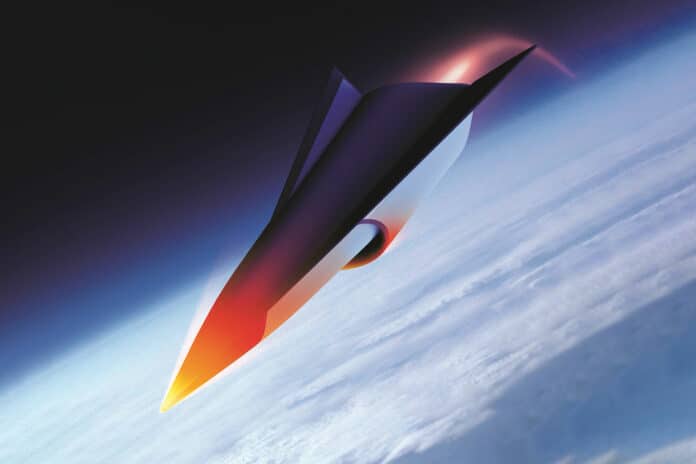GE Aerospace has successfully demonstrated what is believed to be a world-first hypersonic dual-mode ramjet (DMRJ) rig test with rotating detonation combustion (RDC) in a supersonic flow stream. This could offer a pathway to the development of a new type of advanced aircraft and missiles that can fly at high supersonic and even hypersonic speeds across long distances with increased efficiency.
The successful high-speed propulsion DMRJ demonstration is part of a comprehensive portfolio of technology programs that GE Aerospace has been developing and scaling to advance hypersonic capabilities, including high-temperature materials and high-temperature electronics, for over a decade.
Typically, air-breathing DMRJ propulsion systems can only operate when the vehicle achieves supersonic speeds of greater than Mach 3. However, GE Aerospace engineers are developing a new type of ramjet that can operate at lower Mach numbers, making the flight vehicle more efficient and increasing its range.
The new engine was demonstrated on a test rig at GE’s Research Center in Niskayuna, New York. It combines the new design with the company’s advances in high-temperature materials, high-temperature electronics, 3D printing, and thermal management technologies to create a practical engine that can operate at both above Mach 5 and below Mach 3.
This technology was made possible by the acquisition of Innoveering last year and GE Aerospace Research’s extensive experience in high Mach research and engine development programs. The new rotating detonation-enabled dual-mode ramjet combines RDC with detonation waves to generate higher thrust more efficiently. RDC technology enables more efficient fuel combustion using detonation waves instead of a standard combustion system. This results in higher thrust generation more efficiently, at an overall smaller engine size and weight than traditional jet engines today.
New architecture with Rotating Detonation Combustion (RDC) could power super-efficient hypersonic vehicles with longer ranges that exceed Mach 5 or over 4,000 mph. The company plans to demonstrate a full-scale version of this system next year.
“As the aerospace sector sets its sight on the future of hypersonics, GE Aerospace is well positioned with the right capabilities, experience, and scale to be a leader in driving new developments for our customers,” said Amy Gowder, President and CEO, GE Aerospace, Defense & Systems in the press release. “The highly successful demonstration of a DMRJ with RDC is an outgrowth of our 10+ years of RDC work, including the strategic acquisition of Innoveering that has brought leading technologies and experience in hypersonic propulsion and ramjets.”
The development of high-speed ramjet propulsion capabilities is a key anchor point of other key advancements in hypersonic technologies. This includes high-temperature materials and high-temperature electronics. GE Aerospace is the only aerospace OEM using ceramic matrix composites in the high-pressure turbines on commercial aircraft, which has delivered higher temperature capabilities and durability, enabling commercial engines to operate more efficiently over time.
Additionally, GE Aerospace has recently demonstrated the first believed Silicon Carbide (SiC) MOSFETs that can operate at temperatures exceeding 800 degrees C, along with other recent advancements in SiC technology that have created scalable 600C-capable electronics to control and monitor hypersonic vehicles in extremely high-temperature operating environments.
GE Aerospace already offers SiC-based electrical power products with power levels from kilowatts to megawatts for harsh environments in aerospace, industrial, and military applications.
